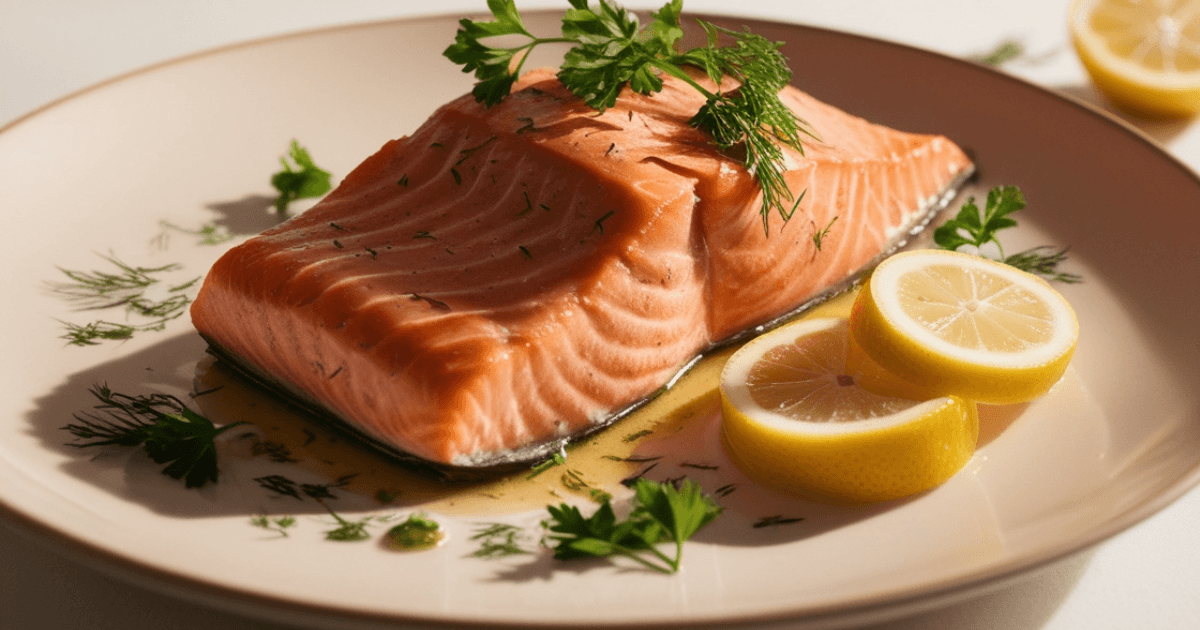Smoked Fish with the Ideal Brine Recipe 2025
Table of Contents
This guide will show you how to make the perfect brine for smoked fish. You’ll learn about the right ingredients and how to brine. This will help you get that smoky flavor and tender texture in every bite.
Whether you’re passionate about cooking or just getting started, this guide is perfect for you. It will take you through making smoked fish with a great brine recipe. You’ll learn how to make delicious smoked fish that will wow your loved ones.
Key Takeaways
- Uncover the science behind the brining process and its benefits for smoked fish
- Discover the essential ingredients for crafting the ideal brine solution
- Master the step-by-step approach to creating your own signature brine
- Explore the different techniques for smoking fish and achieving the perfect flavor
- Troubleshoot common issues and learn how to avoid mistakes in the smoking process
Understanding the Art of Fish Brining
Learning how to brine fish is key to making delicious smoked fish. This process involves a balance of osmosis and protein denaturation. It changes the fish’s texture and taste. By mastering fish brining, you can make your smoked salmon or seafood even better.
The Science Behind Brining Process
The brining process uses a saltwater solution to change the fish. The salt pulls water out of the fish through osmosis. It also changes the proteins in the flesh, making the fish firmer and more tender.
Benefits of Proper Fish Brining
- Enhanced flavor: The brine adds a nice balance of salt and sweetness, improving the fish’s taste.
- Moisture retention: The proteins in the fish help keep its juices, so it doesn’t dry out when smoked.
- Improved texture: Brined fish has a firmer yet tender texture, making it more enjoyable to eat.
Common Brining Mistakes to Avoid
While brining has many benefits, there are mistakes to watch out for. Overbrining can make the fish too salty and dry. Using the wrong salt amount can mess up the flavors. It’s also important to keep the brine at the right temperature and store it properly.
Essential Ingredients for the Perfect Brine Solution
Making the perfect brine for fish to smoke or smoked salmon brine needs careful ingredient selection. Knowing each part’s role helps you get the right flavor, texture, and preservation in your smoked fish.
The core of a good brine is salt. Salt boosts the fish’s taste and is key in brining, pulling out moisture and stopping bad bacteria. Finding the right salt-to-water mix is key for the right saltiness and keeping the fish safe.
Sugar adds a sweet touch that balances the flavor. The sugar amount can vary, but it makes the fish taste better and look caramelized when smoked.
You can also add additional flavorings like herbs, spices, or citrus. These add special smells and tastes, making your smoked fish even better.
In some recipes, pink curing salt, or sodium nitrite, is a must. It keeps the fish’s color bright and stops bad bacteria, making it safe and tasty.
- Salt: Enhances flavor and preserves the fish
- Sugar: Adds a subtle sweetness and contributes to caramelization
- Herbs and spices: Introduce unique aromas and taste notes
- Pink curing salt: Maintains color and inhibits bacterial growth
Understanding each ingredient’s role lets you make a brine for fish to smoke or smoked salmon brine that brings out the best in your seafood. You’ll get a delicious and well-kept final product.
Basic Steps to Create Your Fish Brine
Making the perfect fish brine is key to delicious smoked salmon or trout. Whether you’re making a fish brine for salmon or a smoking brine for salmon, follow a structured approach. This ensures consistent results. Let’s explore the essential steps to make your own flavorful fish brine.
Measuring and Mixing Components
The success of your fish brine depends on accurate measurements and mixing. Begin by setting the salt-to-water ratio, usually between 3% to 6% salt by weight. Dissolve the salt in cool water, making sure it’s fully mixed. Next, add seasonings like brown sugar, honey, or spices, adjusting amounts to your liking.
Temperature Control Guidelines
Keeping the right temperature during brining is vital. Aim for a range of 34°F to 40°F (1°C to 4°C). This cool temperature helps the fish soak up the brine evenly, preserving its texture and flavor. Watch the temperature closely and adjust as needed to keep it within the ideal range.
Storage and Safety Tips
- Keep the brine in a clean, food-grade container with a tight lid.
- Refrigerate the brine at a temperature below 40°F (4°C) to stop bacterial growth.
- Use the brine within 5-7 days for the best results. Discard any leftover brine if it’s cloudy or smells off.
- Make sure all equipment and surfaces are clean and sanitized during brining.
By following these basic steps, you’ll be on your way to making a fish brine for salmon or a smoking brine for salmon. This will take your smoked fish to new levels of flavor and texture.
Preparing Different Types of Smoked Fish
Exploring smoked fish, you’ll find many species to try. From smoked salmon to smoked trout, each needs its own brine and smoking method.
Smoked salmon gets its magic from a special brine. This brine has salt, sugar, and spices that bring out the fish’s sweetness and flavor. On the other hand, smoked whitefish needs a brine with more salt because it’s leaner.
The smoking process is key for the smoky taste and texture. Try different woods, temperatures, and methods to enhance each smoked fish. Specialties like smoked sturgeon and smoked mackerel have their own unique tastes.
- Salmon: Brine with a balance of salt, sugar, and aromatics
- Trout: Adapt the brine to the fish’s leaner texture
- Whitefish: Use a higher salt content in the brine
- Sturgeon and Mackerel: Explore regional specialty smoked fish varieties
Knowing how to brine and smoke each fish can open up a world of flavors. Don’t be afraid to experiment and let your creativity in the kitchen shine.
Smoking Techniques and Temperature Control
To get the best smoked fish, you need to know how to smoke and control the temperature. There are two main ways: cold smoking and hot smoking. Each method gives your brine for fish to smoke and smoked fish a unique taste.
Cold Smoking vs. Hot Smoking
Cold smoking uses smoke at 68-86°F. It takes 6-24 hours to add a light, smoky flavor. This method keeps the fish moist and soft.
Hot smoking, on the other hand, cooks the fish at 120-180°F for 2-6 hours. It makes the fish drier and gives it a stronger smoke taste.
Wood Selection for Optimal Flavor
The wood you choose affects the taste of your smoked fish. Hardwoods like oak, maple, and hickory give a strong, savory flavor. Fruit woods, such as apple or cherry, add a milder, sweeter taste.
Choosing the right wood or mixing different types lets you create your perfect flavor.
Time and Temperature Charts
| Smoking Method | Temperature Range | Approximate Smoking Time |
| Cold Smoking | 68-86°F | 6-24 hours |
| Hot Smoking | 120-180°F | 2-6 hours |
Following the right time and temperature is key for safe and tasty smoked fish. Keep a close eye on the process and adjust as needed. This way, you’ll get delicious results every time.
Troubleshooting Common Smoking Issues
Smoking fish can be a rewarding hobby, but it comes with its own set of challenges. Whether you’re new to smoking or have been doing it for a while, you might face common problems. These issues can affect the taste and quality of your smoked fish. In this section, we’ll look at some common problems and offer solutions to help you make delicious smoked fish every time.
Dry or Overcooked Fish
Dry or overcooked fish is a common issue. It can happen due to wrong temperature settings, not enough brining, or smoking for too long. To fix this, use the right fish brine for salmon and keep an eye on the fish’s internal temperature. Adjust the smoking time and temperature to get the right moisture and doneness.
Uneven Smoking
Getting even smoke penetration and color on your smoked fish can be hard. This might be because of bad air flow, too much fish in the smoker, or uneven fuel. To solve this, space your fish evenly and use a smoker with adjustable airflow. This helps ensure smoke spreads evenly.
Inadequate Flavor Penetration
If your smoked fish doesn’t taste as good as you want, it might not have enough flavor. Try longer brining times, stronger brine, and different wood chips or pellets. Don’t be afraid to try new things and adjust your recipe until it’s just right.
| Common Smoking Issue | Possible Causes | Suggested Solutions |
| Dry or Overcooked Fish | – Incorrect temperature settings- Insufficient brining- Prolonged smoking times | – Monitor internal temperature- Adjust smoking time and temperature- Use appropriate fish brine for salmon |
| Uneven Smoking | – Improper air circulation- Overcrowding in the smoker- Inconsistent fuel sources | – Evenly space smoked fish fillets- Use a smoker with adjustable airflow- Maintain consistent fuel source |
| Inadequate Flavor Penetration | – Insufficient brining- Lack of smoke absorption | – Experiment with longer brining times- Try different wood chips or pellets- Adjust brine solution strength |
By tackling these common smoking problems, you can improve your smoked fish game. The key to success is a mix of precise technique, patience, and being open to trying new things. This way, you’ll always get great results.
Conclusion
In this guide, you’ve learned how to make tasty smoked fish with the best brine recipe. You now know how to make your own smoked salmon brine. This will let you enjoy the rich flavors you’ve created.
Brining is key to making great smoked fish. By mixing the right ingredients and controlling the temperature, you can make your fish taste amazing. Try different recipes to find your favorite.
Creating delicious smoked fish is all about the details. Focus on temperature, wood choice, and smoking time. With time and effort, you’ll become a pro at smoking. You’ll impress everyone with your homemade smoked salmon brine and other smoked fish dishes.
FAQ
What is the reason for brining fish before smoking?
Brining fish before smoking makes it taste better. It keeps the fish moist during smoking. It also makes the fish’s texture better.
What are the key ingredients in a fish brining solution?
A fish brining solution has salt, sugar, water, and sometimes herbs or spices. These add extra flavor.
How do I measure and mix the brine components correctly?
To make a great brine, measure each ingredient carefully. Mix them well. Use a recipe and the right salt-to-water ratio for balance.
What is the recommended brining time for different types of fish?
Brining time depends on the fish’s thickness and fat. Thinner fish like trout need 2-4 hours. Fattier fish like salmon may need 6-12 hours.
How do I properly control the temperature during the brining process?
Keep the brine temperature between 35°F and 40°F. This is key for good brining. Don’t let it get too warm, as this can cause food safety problems.
What distinguishes cold smoking from hot smoking techniques?
Cold smoking is done at low temperatures, under 100°F. It’s slower and gives a subtle smokiness. Hot smoking is at higher temperatures, 150°F to 225°F, and gives a stronger smoky flavor.
What is the best way to select wood for smoking fish?
The wood you choose affects the fish’s flavor. Alder, apple, cherry, and oak are popular. Each wood gives a different taste and aroma.
What are some common issues that can arise during the smoking process, and how can I troubleshoot them?
Issues like dry fish, uneven smoking, and weak flavor can happen. To fix these, adjust brining time, smoking temperature, or wood type.

